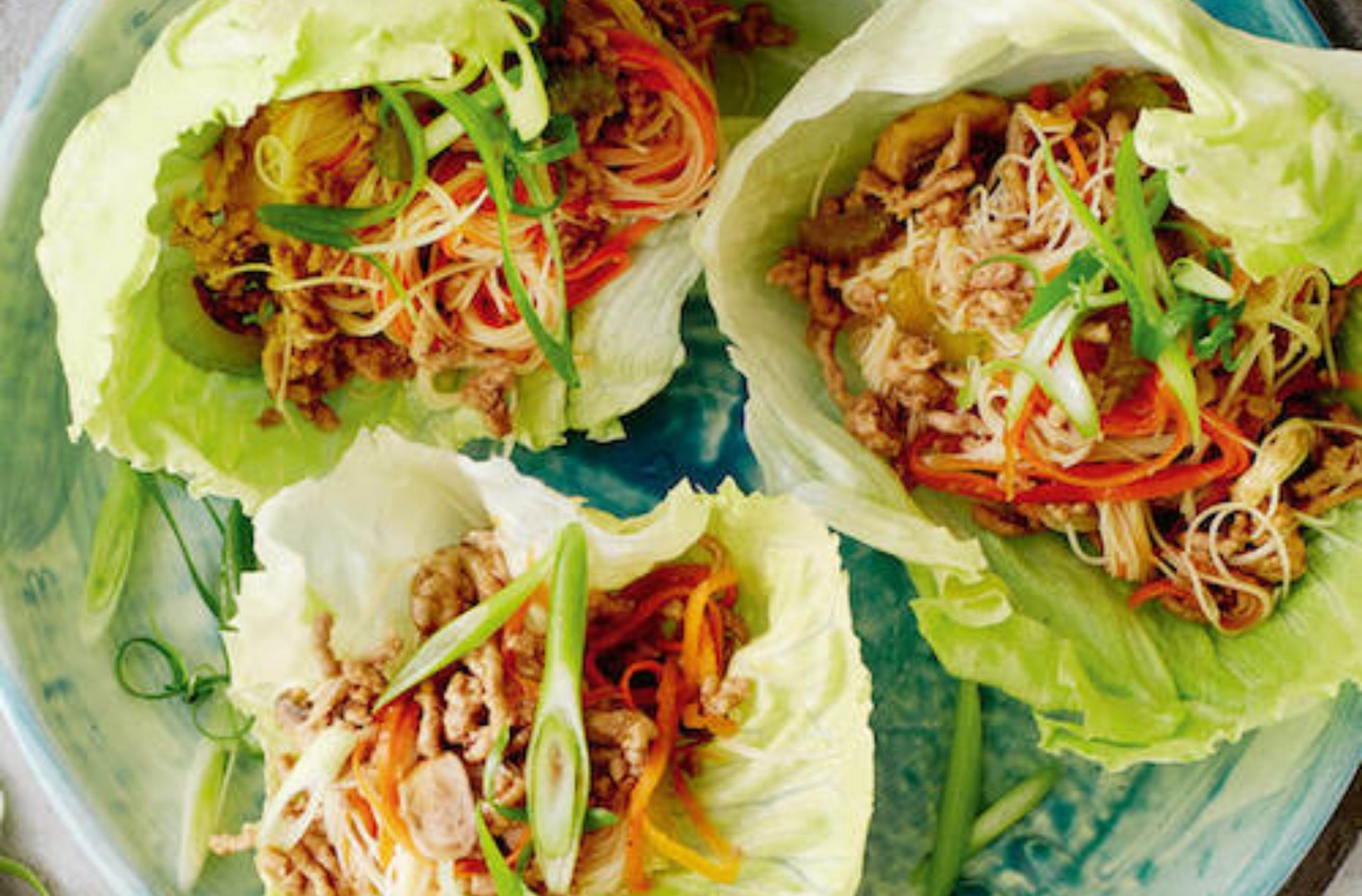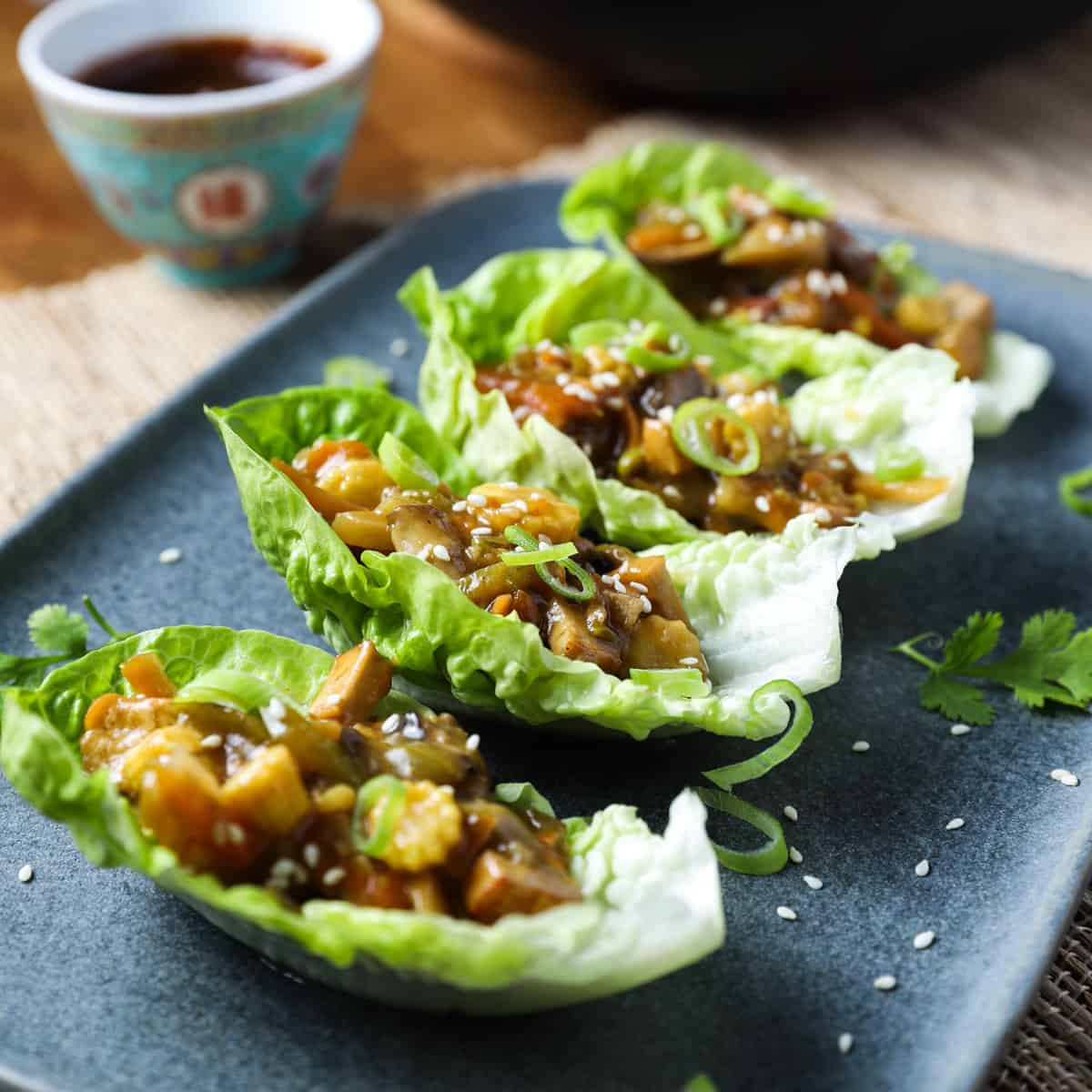San choy bau recipe masterchef – Prepare yourself for a culinary adventure as we dive into the world of San Choy Bau, a dish that has captured the hearts and taste buds of food enthusiasts worldwide. Featured prominently on the renowned cooking show MasterChef, this tantalizing delicacy is now within your reach, waiting to be recreated in the comfort of your own kitchen.
As we embark on this gastronomic journey, we’ll explore the origins and cultural significance of San Choy Bau, unraveling the unique flavors and textures that make it an unforgettable dish. Join us as we delve into the MasterChef recipe, providing a step-by-step guide to crafting the perfect San Choy Bau experience.
San Choy Bau: A Culinary Masterpiece

San Choy Bau is a beloved dish with origins in the Guangdong province of China. It consists of crisp lettuce cups filled with a savory mixture of minced pork, shrimp, vegetables, and a flavorful sauce. The name “San Choy Bau” translates to “three cups,” referring to the three main ingredients: lettuce, meat, and sauce.
This dish holds cultural significance in Chinese cuisine, often served during special occasions and festivals. It symbolizes prosperity and good fortune, with the lettuce representing wealth, the meat representing strength, and the sauce representing happiness. The act of wrapping the filling in lettuce cups also represents unity and togetherness.
San Choy Bau is characterized by its unique blend of flavors and textures. The crispy lettuce provides a refreshing crunch, while the savory filling offers a combination of umami, sweetness, and a hint of spice. The sauce, typically made with soy sauce, oyster sauce, and sesame oil, adds a rich and flavorful glaze to the dish.
MasterChef’s San Choy Bau Recipe

Indulge in the culinary masterpiece that is San Choy Bau, a delectable dish featured on the renowned MasterChef cooking competition. This step-by-step guide will empower you to recreate this exquisite appetizer in the comfort of your own kitchen, impressing your guests with your culinary prowess.
Preparing the Filling
- Finely chop 500g of pork mince.
- Heat a wok or large frying pan over medium heat and add 2 tablespoons of vegetable oil.
- Add the pork mince and cook until browned.
- Add 1 chopped onion, 2 cloves of minced garlic, and 1 tablespoon of grated ginger and cook until softened.
- Stir in 1 tablespoon of soy sauce, 1 tablespoon of oyster sauce, 1 tablespoon of rice wine vinegar, and 1 teaspoon of sesame oil. Cook for 2-3 minutes.
Preparing the Lettuce Cups, San choy bau recipe masterchef
- Wash and dry 12 large lettuce leaves (such as iceberg or cos lettuce).
- Carefully separate the leaves from the head of lettuce, leaving the base intact.
- Pat the leaves dry with paper towels.
Preparing the Dipping Sauce
- In a small bowl, whisk together 1/4 cup of soy sauce, 1/4 cup of rice vinegar, 1 tablespoon of sesame oil, and 1 teaspoon of sugar.
- Add 1 finely chopped chili (optional) for a spicy kick.
Assembling the San Choy Bau
- Place a lettuce cup in the palm of your hand.
- Spoon some of the pork filling into the lettuce cup.
- Top with chopped spring onions, coriander, and a drizzle of the dipping sauce.
- Serve immediately.
Variations on the Classic
The versatility of San Choy Bau allows for endless variations, each offering a unique culinary experience. From innovative ingredient combinations to diverse cooking techniques, these variations push the boundaries of the traditional dish.
One notable variation is the incorporation of different lettuce varieties. While iceberg lettuce is commonly used, variations include using butter lettuce, romaine lettuce, or even endive for a more bitter flavor profile.
Lettuce Variations
- Butter lettuce: Provides a soft, delicate texture that complements the filling’s flavors.
- Romaine lettuce: Offers a sturdier texture, allowing for more substantial fillings.
- Endive: Imparts a slightly bitter taste, adding complexity to the dish.
Another variation involves the use of different fillings. Traditional San Choy Bau features a pork mince filling, but variations include fillings made with chicken, beef, shrimp, or tofu. Vegetarian options may use a combination of vegetables, such as carrots, celery, and mushrooms.
Filling Variations
- Chicken filling: Offers a lighter and more delicate flavor compared to pork.
- Beef filling: Provides a richer and more robust flavor.
- Shrimp filling: Adds a seafood twist, providing a briny and succulent taste.
- Tofu filling: A plant-based option that absorbs the flavors of the sauce and vegetables.
- Vegetable filling: A healthy and colorful option that provides a variety of textures and flavors.
In addition to the lettuce and filling variations, cooking techniques can also be adapted to create unique San Choy Bau experiences. Steaming or stir-frying the filling offers different textures and flavors, while variations may include baking or grilling the lettuce cups.
Cooking Technique Variations
- Steamed filling: Retains moisture and creates a delicate texture.
- Stir-fried filling: Develops a smoky flavor and a slightly crispy texture.
- Baked lettuce cups: Provides a crispy exterior and a warm and inviting presentation.
- Grilled lettuce cups: Imparts a smoky flavor and a slightly charred exterior.
These variations showcase the versatility of San Choy Bau, demonstrating how different ingredients and cooking techniques can transform the dish while maintaining its essence. Whether it’s the crisp lettuce cups, the savory fillings, or the aromatic sauces, San Choy Bau continues to captivate taste buds with its endless possibilities.
The Art of Presentation
San Choy Bau, beyond its delectable flavors, is a dish that captivates the eyes as much as it does the palate. Presentation plays a pivotal role in elevating this culinary masterpiece, transforming it from a mere dish into an edible work of art.
When crafting the perfect San Choy Bau presentation, attention to detail is paramount. Begin by arranging the lettuce cups in a visually appealing manner, ensuring they stand upright and have a graceful curve. Fill them generously with the savory filling, leaving ample space for diners to fold and savor each bite.
Garnishing for Visual Appeal
Garnishing San Choy Bau is an art form in itself. Fresh herbs, such as coriander or basil, add vibrant color and a refreshing aroma. Edible flowers, like nasturtium or chive blossoms, provide a delicate touch of elegance. Sesame seeds or crushed peanuts offer a delightful textural contrast, while a drizzle of sesame oil imparts a glossy sheen.
Consider using contrasting colors to create a visually striking dish. For instance, the vibrant green of lettuce cups against the deep brown of the filling can be complemented by a sprinkling of bright red chili flakes or thinly sliced green onions.
Creating a Culinary Canvas
San Choy Bau can be transformed into a culinary canvas for showcasing your creativity. Arrange the lettuce cups in a circular or linear pattern, or create an intricate mosaic design. Use different colored fillings to create a vibrant and eye-catching dish.
Consider using edible stencils or cookie cutters to create unique shapes for the lettuce cups. This technique adds a playful and modern touch to the traditional dish, making it perfect for special occasions or gatherings.
Remember, the art of presentation in San Choy Bau is not merely about aesthetics; it also enhances the dining experience. By creating a visually appealing dish, you invite diners to engage with their food on a deeper level, savoring both its flavors and its beauty.
San Choy Bau in Modern Cuisine: San Choy Bau Recipe Masterchef

In contemporary cuisine, San Choy Bau has undergone a remarkable transformation, embracing innovative interpretations that showcase the versatility and creativity of modern chefs. These interpretations range from reinterpretations of the classic dish to bold culinary experiments that push the boundaries of flavor and presentation.
One notable trend is the use of alternative fillings, such as grilled or roasted vegetables, seafood, and even plant-based proteins. These fillings add depth and complexity to the dish, while still maintaining the essence of San Choy Bau.
Deconstructed San Choy Bau
Deconstructed San Choy Bau is a playful and visually stunning interpretation of the classic dish. The elements of the traditional dish are separated and arranged on a plate, allowing diners to assemble their own bites. This approach emphasizes the individual components and encourages diners to experiment with different combinations of flavors and textures.
Molecular San Choy Bau
Molecular gastronomy has also made its mark on San Choy Bau. Chefs are using techniques such as spherification and emulsification to create innovative presentations and textures. For example, the traditional lettuce cups may be replaced with edible spheres filled with the minced filling, or the sauce may be transformed into a delicate foam.
Last Point
Our exploration of San Choy Bau concludes with a celebration of its versatility and modern interpretations. We’ll showcase variations that push the boundaries of tradition, demonstrating how this classic dish continues to inspire culinary innovation. Whether you’re a seasoned chef or a home cook seeking culinary adventures, this guide will equip you with the knowledge and inspiration to master the art of San Choy Bau.
Commonly Asked Questions
What is the origin of San Choy Bau?
San Choy Bau originated in China’s Guangdong province and is believed to have been introduced to Australia by Chinese immigrants in the 19th century.
What are the key ingredients in San Choy Bau?
The traditional filling includes minced pork, prawns, water chestnuts, bamboo shoots, and mushrooms.
How do I choose the right lettuce for San Choy Bau?
Look for large, sturdy lettuce leaves that can hold the filling without tearing, such as iceberg or cos lettuce.
Can I make San Choy Bau ahead of time?
Yes, you can prepare the filling and lettuce cups up to a day in advance. Assemble the San Choy Bau just before serving to maintain freshness.